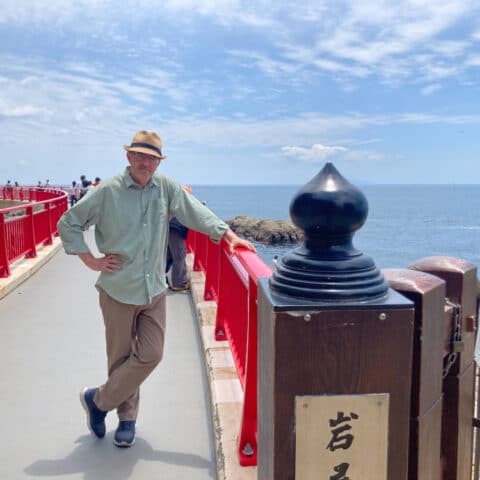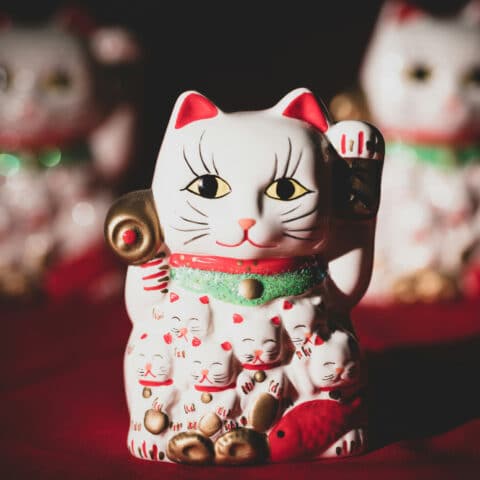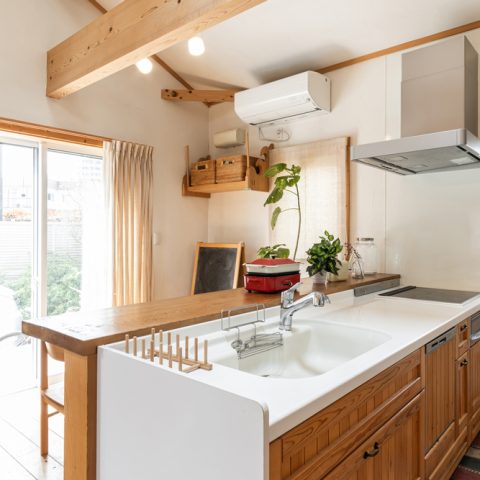
Have you ever gone to a Japanese restaurant where instead of the typical fork, spoon, and knife set, you received… a pair of long sticks? Well, these “long sticks” are called chopsticks in the West, and are known as “hashi” (箸) or “ohashi” (お箸) (the polite version of the word) in Japan. They are the typical utensils of choice here, as well as throughout many other Asian countries!
A Brief History
Chopsticks originated from the Henan province in China around 1200 BCE. During the early 7th century, when Japanese government official Ono-no-Imoko brought back the knowledge of how the Chinese used their chopsticks to Prince Shotoku Taishi, he was extremely impressed and spread the culture throughout the imperial court. Ultimately, the use of chopsticks spread to the commoners. Before this, however, the Japanese used chopsticks strictly for religious ceremonies. Outside of these celebrations, they would typically eat meals with their hands.

Chopsticks on a hanging display – Photo by Kristina Kobuke
The Japanese people strongly believed that chopsticks were to provide a bridge (hence the term “hashi,” which is also a homonym for bridge) between humans and the divine. Because of this, they were commonly used to prevent people’s hands from touching the gods’ food.
Different Types and Lengths
As you may or may not know, there are multiple different types of chopsticks used by people from all over Asia. People in South Korea typically use metal chopsticks, while Chinese chopsticks have more of a blunt end. In Japan, they prefer pointed tips, and there are multiple different types and lengths of chopsticks available for use! Below are some examples of different chopsticks that can be found in Japan.
Men vs. Women
This may be surprising to some, but the lengths of chopsticks can differ depending on gender. Men’s chopsticks are around 8 inches (23-25 cm) while women’s chopsticks are around 7 inches (21-23 cm). This is due to the fact that women generally have smaller hands than men, making it harder for them to hold the longer chopsticks. However, at restaurants, everyone is given the male chopsticks, as it’s the standard size.

Young girl using training chopsticks – Photo by Irinia Wilhauk
Beginner Friendly?
Now, if you, a friend, or even your child wants to learn how to use chopsticks, these chopsticks are perfect for you! They are called training chopsticks, and can be used by both children and adults! Both versions have a hole or two to slide your fingers into. However, the difference between the two is that the ones for children are smaller, and oftentimes have a cute character on top to connect the chopsticks!

Two different kinds of “waribashi” next to each other – Photo by Kristina Kobuke
割り箸 “Waribashi”
This is a very common type of chopstick that most people, including yourself, have probably seen before. You may have seen it given at grocery stores, in your take-out or delivery, or even at restaurants! These chopsticks are called 割り箸 (waribashi) and are made out of wood, so they can be disposed of after use.

Woman using Saibashi to make noodles – Photo by Katerina Holmes from Pexels
菜箸 “Saibashi”
These chopsticks are probably some of the longest chopsticks you will find! They are long, normally around 30 cm in length (~20 inches!), and made out of either wood or bamboo. Saibashi is commonly used in the kitchen for cooking, such as stirring and mixing, and is very handy to keep your hands away from the burning heat.

Holding ramen with chopsticks – Photo by Kristina Kobuke
Things To Do/Not To Do With Chopsticks
Unsurprisingly, there are a lot of rules when it comes to chopsticks. First off, the proper way to hold chopsticks is to use your dominant hand and rest one of them on top of your ring finger. Then put your middle finger on top of the one you just put down, and rest your pointer finger on the very top, with your thumb supporting the side. You move the upper chopstick to grab things, and keep the bottom one still!
There are many rules of things NOT to do when it comes to chopsticks as well. For example, some of the few rules include:
Sticking/stabbing chopsticks into food
Sticking chopsticks vertically into rice is done at funerals or as an offering to the deceased. Therefore, it can remind people of death and is considered disrespectful and thought to bring bad luck.
Passing food from one chopstick to another
This is probably the worst thing to do with chopsticks. In Japan during funerals, the bones after a cremation are passed from chopstick to chopstick. It can remind people of this funerary practice and therefore is considered rude. If you want to share your food, put it on the other person’s plate yourself or have them pick it up from yours.
Using chopsticks to bring the plate closer to you
Not only is this considered rude, but sliding the plate can create unpleasant noise, and it could also lead to spilling what’s inside, which could cause disturbance to those around you.
Pointing at others with your chopsticks
Pointing with chopsticks, much less at someone, is considered impolite, similar to how pointing a finger at someone is viewed in the West.
Holding chopsticks with your mouth
This is considered unhygienic and rude. Not only that but if something were to happen while you have them in your mouth, it can become dangerous!
While Japan may sound strict regarding chopsticks and table manners, they are more than just guidelines. They all stem from cultural ideologies, making it important to follow these rules to be respectful when eating. Keep the rules mentioned above in mind, and you’ll be set to eat in Japan with chopsticks like a pro!
Now that you know chopstick customs, why not join a culinary tour and put them into practice?
Featured Photo: Kristina Kobuke



